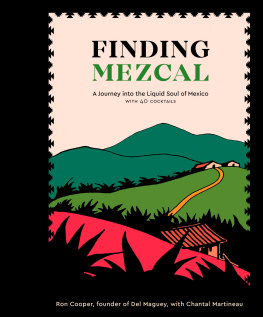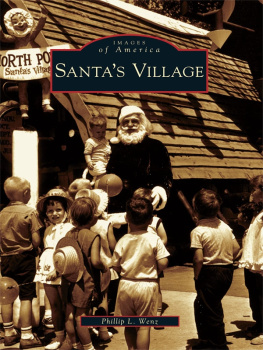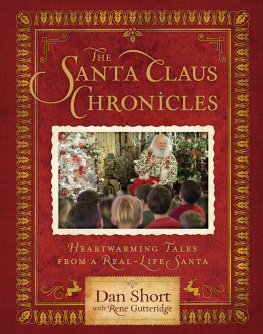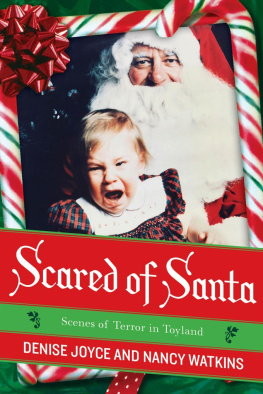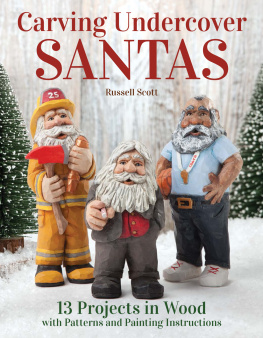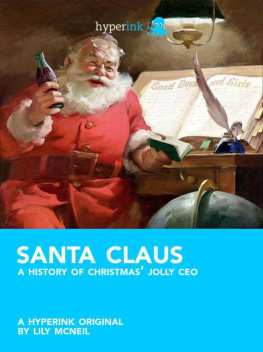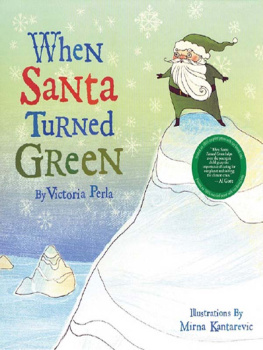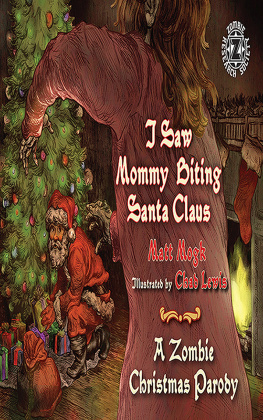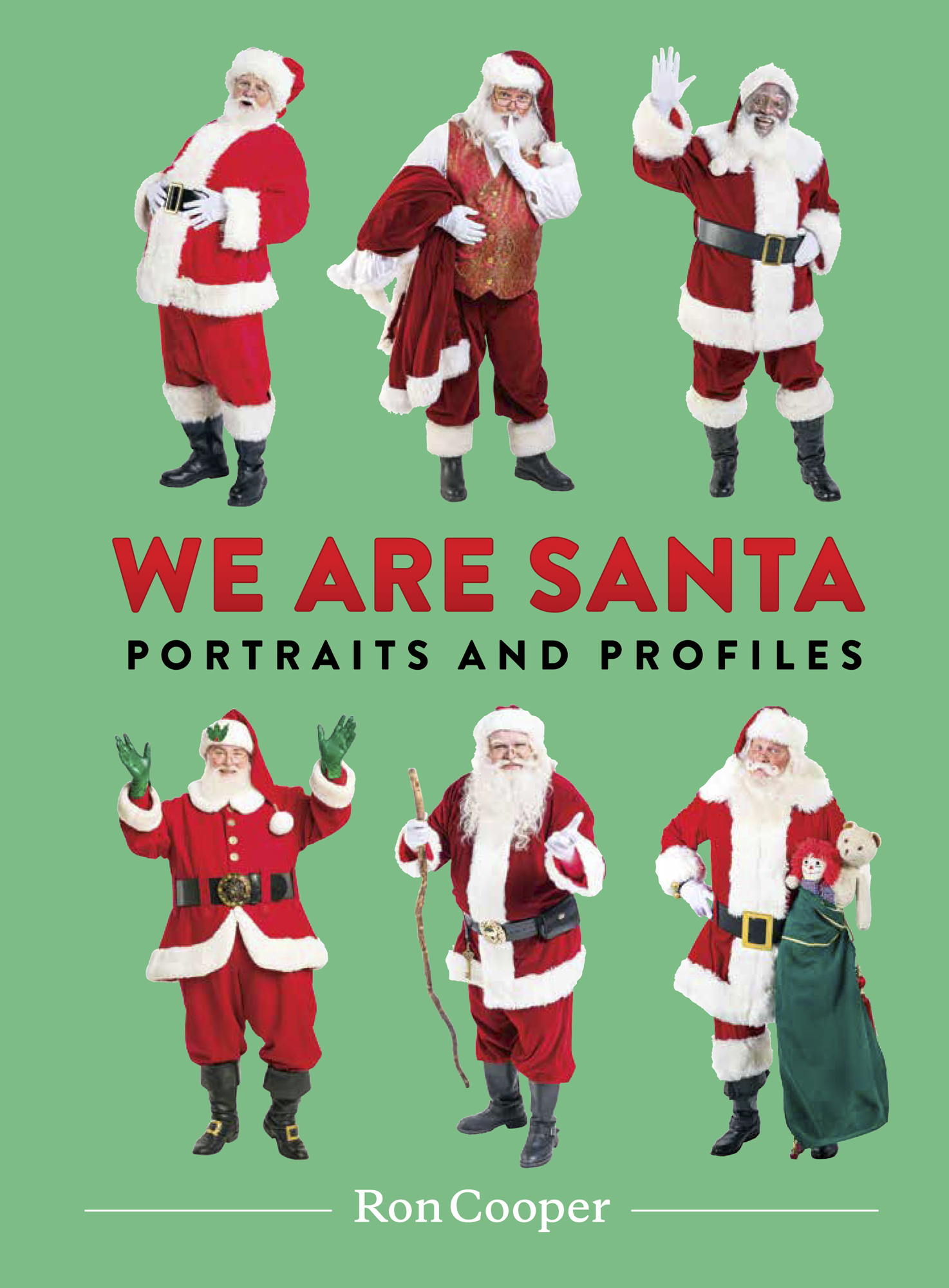
Santa Claus is anyone who loves another and seeks to make them happy; who gives himself by thought or word or deed in every gift that he bestows.
Edwin Osgood Grover
The real Santa Claus is at the mall.
Lemony Snicket


You might ask, What about the one real Santa?
Hes asked us not to tell you
which one he is, but if you look closely, you just might spot him in these pages.

Published by
Princeton Architectural Press
202 Warren Street, Hudson, New York 12534
www.papress.com
2021 Ron Cooper
All rights reserved.
ISBN 978-1-61689-965-3 (hardcover)
ISBN 978-1-64896-010-9 (epub, mobi)
No part of this book may be used or reproduced in any manner without written permission from the publisher, except in the context of reviews.
Every reasonable attempt has been made to identify owners of copyright.
Errors or omissions will be corrected in subsequent editions.
Editor: Lynn Grady
Designer: Paul Wagner
Library of Congress Cataloging-in-Publication Data available upon request.
CONTENTS
Erica Stulls skills as a writer are evident in these pages. She has taken tons of information and distilled it into highly readable and entertaining prose. If youve enjoyed reading the stories and profiles in this book, its all due to Erica.
INTRODUCTION
I met my first professional Santa Claus three years ago in New Mexico, where I was photographing cowboys, gunslingers, snake handlers, and Civil Warera reenactors. One subject made a convincing 1860s Union soldier, complete with authentic costume and rifle musket. After we had completed the shoot, he asked if he could show me a very different character that he portrayed. I agreed, and he returned fifteen minutes later as Santa Claus.
Shortly after that, I saw a news story about the Charles W. Howard Santa School, the oldest Santa training program in the nation. This ideathat there is an actual school for Santaswas a new one to me, but I was immediately intrigued by the seriousness with which the schools students pursued the art and craft of embodying Santa Claus. It wasnt long before I learned that Santa Claus is the most photographed character in the world. Thats when I thought to myself, who better, then, to be the focus of a new photography project? Santa, of course.
I've always enjoyed meeting and photographing people who follow their passions, especially when those ambitions take them far outside the realm of their daily lives. In addition to historical reenactors, Ive photographed clowns, drag queens, and, of course, Santas. On the surface, they are very different groups of people, but these transformers are united in their commitment to their callings and in their eagerness to creatively reinvent themselves physically as they embody their characters of choice.
With the assistance of two leading Santa booking agents, I arranged photo shoots with dozens of top professional Santas in cities across the country. I asked them to arrive at the studio in street clothesno bells, no red suitso that I could take their portraits, to be presented in black and white.
Thats when the real fun began. In what was often an elaborate and lengthy physical transformation, each Santa changed into his favorite suit for another set of photographs, this time in full color. Through these photo sessions, I learned a lot about Santa's wardrobe and accessories, as well as special padding and all manner of props. Many brought two or more suits for distinct looks, and as I traveled from city to city, I found myself both surprised and impressed by the diversity and range of the character we know simply as Santa.
More importantly, I learned about the dedication, professionalism, commitment, and character of these people. They are deeply devoted to their missionto the children they meet, to the integrity of their persona, to the spirit of the season, and to the history and traditions of Santa Claus. Each one is an inspiration.
Ron Cooper, 2020
Who Is Santa? Santa is Everywhere!

T he origin of Santa Claus dates back to the third century and a man named Nicholas. Nicholas was Bishop of Myra in what is now known as Turkey. He developed a reputation for generosity, giving away his inherited wealth to those in need. Saint Nicholas, as he came to be known, was the patron saint of children and sailors, and, in his honor, a tradition of gift giving was born. That tradition spread across Europe, and children began to look forward to the night before Nicholass name day, December 6, as a kind of holiday. Hundreds of years later, Dutch sailors brought Sinter Klaasa shortened version of Sint Nikolaasto colonial America, where he was represented as a tall, slender bishop.
In the North American colonies, the Dutch figure of Sinter Klaas merged with the English concept of Father Christmas, a big man in fur-lined green or red robes, and Santa Claus transformed into the man we know today. In parts of the US, he became known as Kris Kringle, a name derived from the Austrian and German Christkindl tradition, in which well-behaved children received presents during the Christmas season.
Santas appearance was established for future generations in 1823, when the Troy Sentinel newspaper in New York published Clement Clarke Moores poem A Visit from St. Nicholas, also known as Twas the Night Before Christmas. Moore described a roly-poly, jolly old elf dressed in fur and sporting a white beard.
In 1863, political cartoonist Thomas Nast, a supporter of Abraham Lincoln and Ulysses S. Grant, used Moores poem to create Santa Claus in Camp, a cartoon in Harpers Weekly that showed Santa distributing gifts in a Union Army camp. Santa is depicted with a full white beard and dressed in a patriotic, stars-and-stripes, ensemble. Two years later, Nast brought Santa back to the Harpers Christmas issue, and made him an annual holiday tradition. His 1881 full-page illustration of Merry Old Santa Claus, now in his signature red suit with fur trim, is often considered Santas first official portrait.
Santa made his department store debut in 1890, when James Edgar, a heavyset dry-goods store owner in Brockton, Massachusetts, had a tailor make him a Nast-style Santa suit. He roamed the store as Santa, talking to children and spreading Christmas cheer. Word of a real, live Santa got out, and Edgar eventually attracted visitors from as far away as New York and Rhode Island. By the turn of the century, children were waiting in long lines to talk to Santa at department stores across the United States and Canada.
Macys Herald Square store in New York held its first Thanksgiving Day Parade in 1924, with Santa presiding from a throne on the balcony above the stores 34th Street entrance. Since then, his arrival at the end of the parade has been a traditional kickoff of the holiday season.
The most familiar modern image of Santa was created by Haddon Sundblom, who painted a jovial Santa for a Coca-Cola ad in 1931. Once again, the artists inspiration was Moores A Visit from St. Nicholas, with a friend serving as the painters model. Sundbloms Santa appeared in Coke ads in popular magazines every year through 1964, cementing him as an icon in the American imagination.


